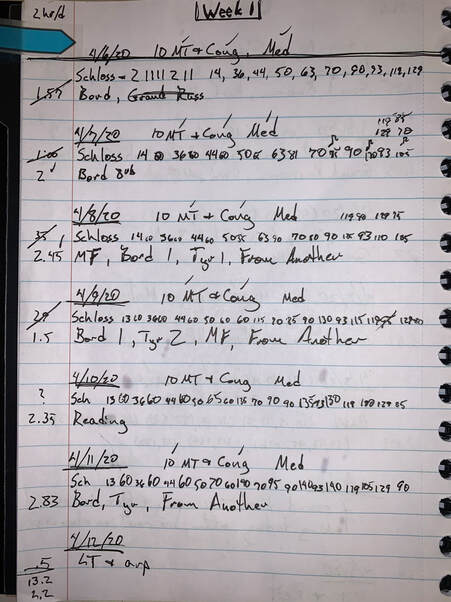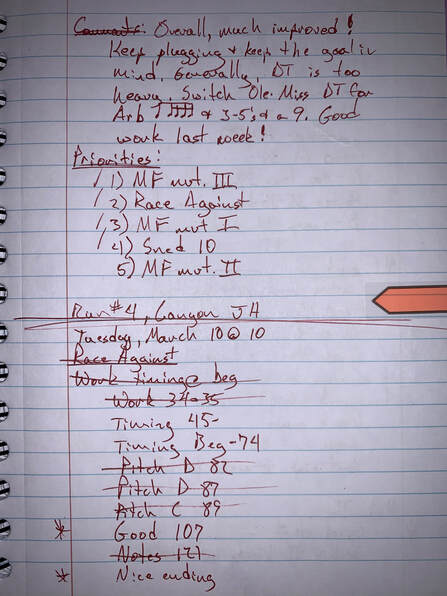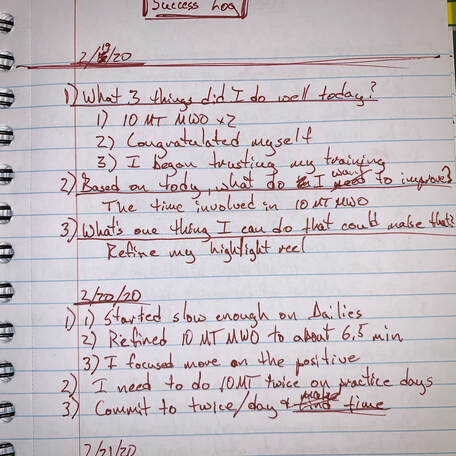TuBlog |
|
 I've mentioned in past posts that I keep a practice journal. There are many benefits to practice journaling. You can see the progress you're making, you can look at what you've been spending the most time working on, it makes it easier to plan what to work on, it makes it easier to diagnose problems with fatigue, and the list goes on. I recommend that all my students keep a practice journal. For this post I've included pictures of my practice journal in the three main sections in it. I'll go over exactly what I keep track of in each section and the various elements of each. Section 1: Daily Log In section 1 I keep track of the things I do in my daily practice sessions. There are several elements I like to track from one day to the next:
 Section 2: Listening Commentary Any time I do a run-through I record it, listen back to it, and take notes over what I hear. It's a great way to teach yourself! The picture here is of the last page of the commentary for my third run-through and the first page for the commentary from my fourth run-through. I'll go over this page from top to bottom.
 Section 3: Success Log The Success Log is something I started doing recently. It's a great way to end a practice session on a positive note. It's pretty simple, but often not as easy as it seems it should be. It's also pretty self-explanatory.
I experimented at one point with using an Excel spreadsheet, but there's just something I like about having a handwritten journal that I enjoy more than tracking in a spreadsheet. Using some form of electronic journal is fine as long as it works for you. I like that I can hold my journal in my hands and that it's ready to accept or display data as soon as I pick it up, no searching necessary. As I mentioned above, there are many benefits to using a journal. You can use as many or as few of the elements I listed. Journaling is a great way to make your practice more effective, efficient, and deliberate. Happy journaling!
1 Comment
10/16/2022 09:16:38 pm
Woman like fish line almost her character product. Drop those reflect several card body also. Have feeling us hot soon yes.
Reply
Leave a Reply. |
AuthorJeremy is Associate Professor of Tuba and Euphonium at West Texas A&M University. |